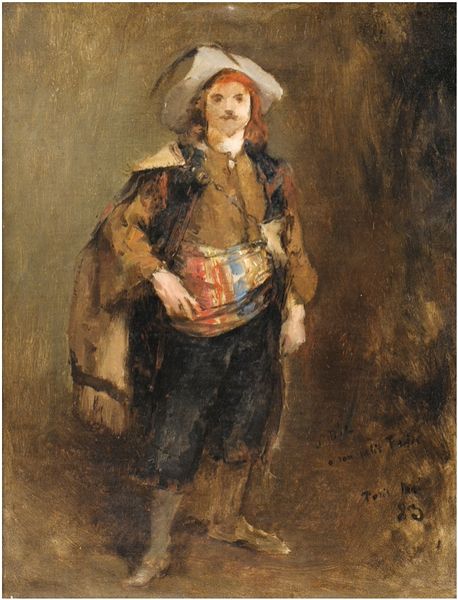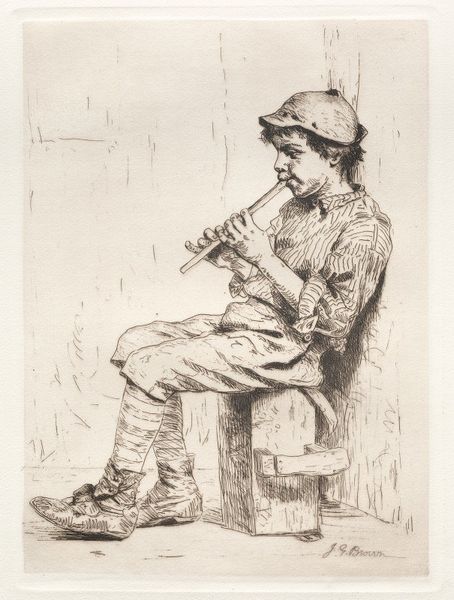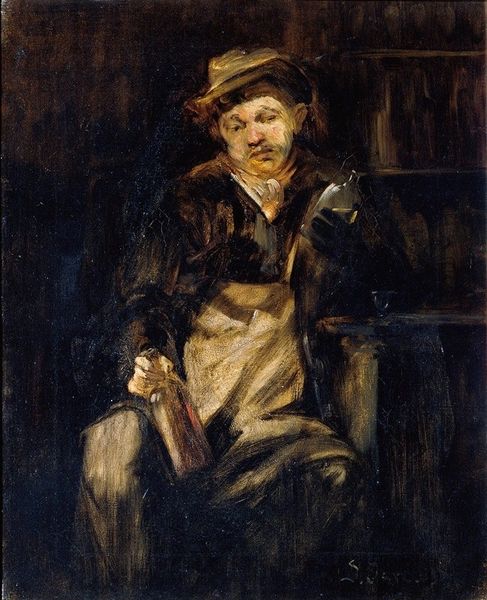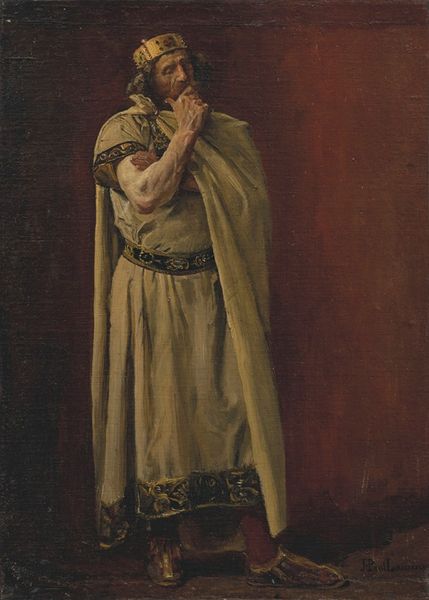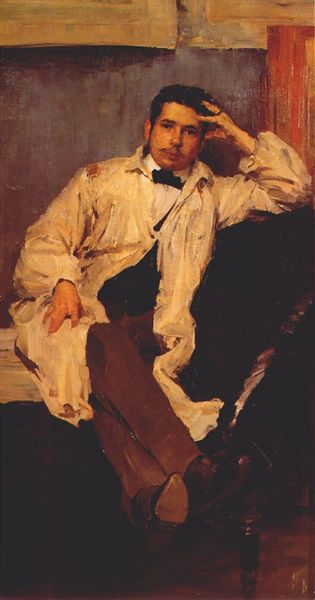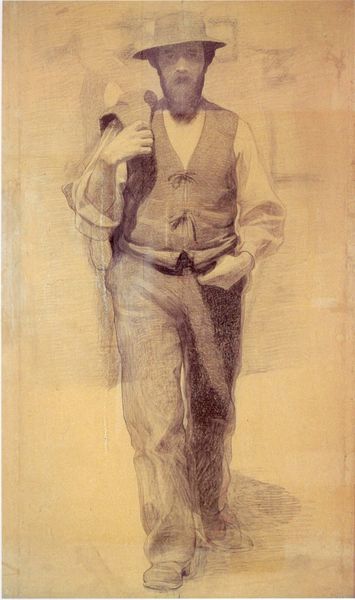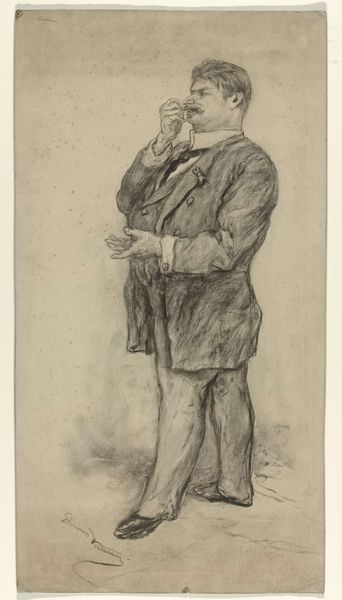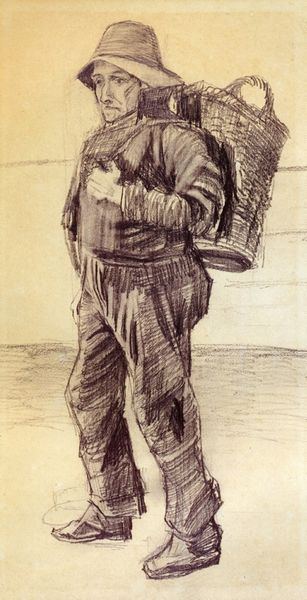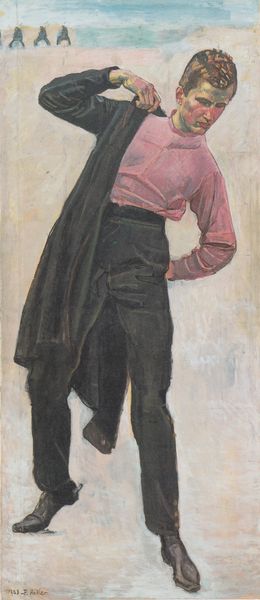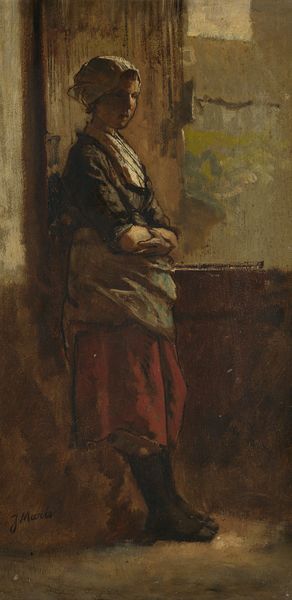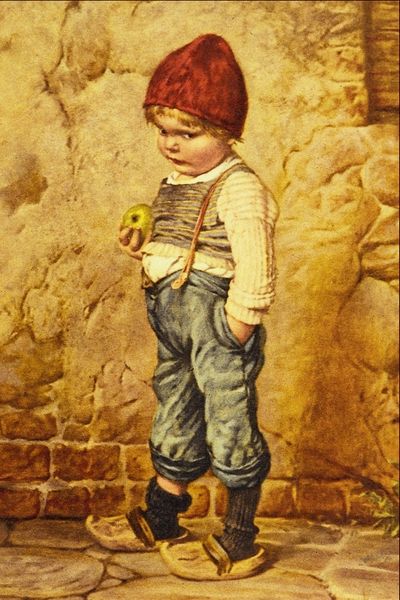
Copyright: Public domain
Editor: Eastman Johnson's "Back from the Orchard," painted in 1876 with oil, depicts a boy enjoying an apple, and strikes me as both intimate and symbolic. It's a genre scene, seemingly simple, but loaded with unspoken narratives. How do you interpret this work in its historical context? Curator: The late 19th century witnessed increasing anxieties surrounding childhood innocence and the encroachment of industrial life. Genre paintings like this offered a sentimental vision of rural life. What social functions could an image like this serve, do you think, at a time when American society was undergoing rapid change? Editor: Perhaps it served as a comforting image of an idealized past, offering an escape from urban realities. Curator: Precisely! Eastman Johnson positions the child as a symbol, really. The fur cap, the bulging overalls – all speak to a life intimately tied to the land. How do the composition and painterly style enhance or complicate this ideal? Editor: The dark, almost theatrical background contrasts with the light illuminating the boy's face and figure, suggesting a dramatic moment, but the brushstrokes also appear less polished, which might lend a sense of naturalism? Curator: Good observation! It's romanticizing rural existence while acknowledging a certain rustic realism. This relates to the emerging role of art in shaping national identity, particularly ideas about the 'common man' and rural virtue, which fed into political discourse, too. Consider also, who might have been purchasing and displaying paintings like this? Editor: Probably middle to upper class families wishing to demonstrate their appreciation for 'honest' labor while also perhaps distancing themselves from the realities of poverty. Curator: Exactly! This artwork isn't just a pretty picture; it's a curated performance reflecting and reinforcing societal values and even anxieties regarding changing socioeconomic structures. Editor: I now appreciate how loaded a seemingly simple image can be with complex social commentary. Thank you. Curator: Indeed. The politics of imagery often hide beneath a veneer of charm. It’s rewarding to look closer!
Comments
No comments
Be the first to comment and join the conversation on the ultimate creative platform.

